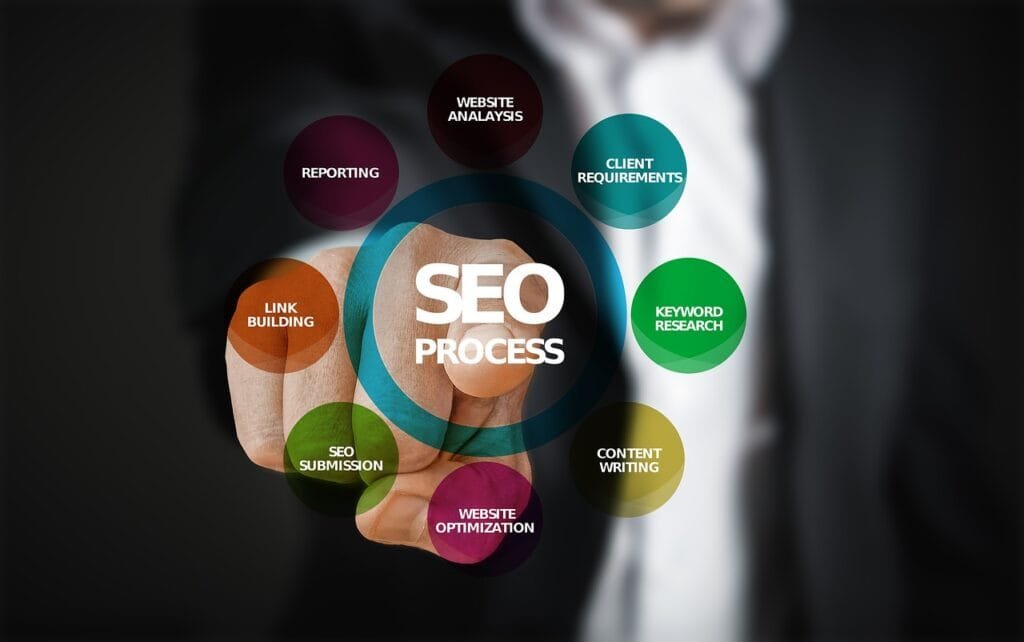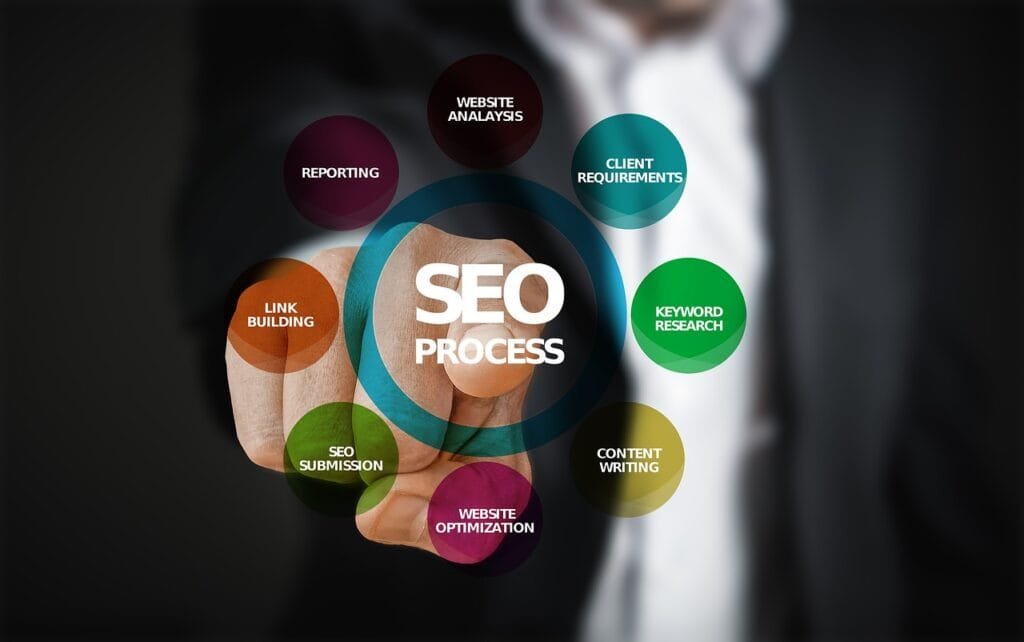This Article has been revised, edited and added to, by Poulomi Chakraborty.
- What Are Micro-Moments?
- Why Micro-Moments Matter in Travel SEO
- Decoding Different Types of Micro-Moments in Travel
- Integrating Micro-Moments into Your SEO Strategy
- Leveraging Content to Capitalize on Micro-Moments
- Measuring the Impact of Micro-Moments on SEO
- Embracing Emerging Technologies to Enhance Micro-Moments
- Conclusion: The Evolving Landscape of Micro-Moments in Travel SEO
The digital realm has transformed the travel industry. Gone are the days when planning a trip meant leafing through brochures or consulting travel agents in dimly lit offices. Today, travelers turn to the digital universe for every tiny travel detail. In this ever-connected world, it’s the ‘micro-moments’ that define a traveler’s journey. These fleeting yet impactful moments can make or break a travel brand‘s SEO strategy. Let’s embark on an exploration of these micro-moments and discover their profound impact on travel SEO.
What Are Micro-Moments?

Micro-moments have emerged as pivotal touchpoints within the consumer journey, especially in the digital landscape. These moments are when consumers turn to their devices, often a smartphone, to act on a need to learn, do, discover, watch, or buy something.
In the travel industry, these moments are crucial, representing opportunities for brands to influence decisions and preferences. The concept, originally coined by Google, reflects the instantaneous and impulsive nature of the digital consumer’s decision-making process. Understanding these micro-moments is essential for startups aiming to capture attention in a cluttered marketplace.
Identifying and Leveraging Micro-Moments for Startups
Recognizing the Four Critical Micro-Moments
For startups, especially in the travel sector, recognizing and categorizing micro-moments can guide strategic content creation and marketing efforts. The four types of micro-moments—’I want to know,’ ‘I want to go,’ ‘I want to do,’ and ‘I want to buy’—offer a framework for understanding consumer intent.
Tailoring content and marketing strategies to these intents can significantly enhance the relevance and effectiveness of your efforts. For example, a consumer in the ‘I want to go’ moment might be looking for destination ideas or travel deals, presenting an opportunity for travel startups to showcase their offerings or unique value propositions.
Crafting a Responsive Strategy
Startups must develop a responsive strategy that addresses these micro-moments with precision and relevance. This involves creating content that not only answers immediate questions but also engages and guides consumers towards a decision. For instance, integrating real-time availability, user reviews, and instant booking options can cater to the ‘I want to buy’ moment, removing barriers to conversion.
Implementing a Micro-Moment Strategy
Enhancing Visibility Across Touchpoints
To capitalize on micro-moments, ensuring your startup is visible at the right time is crucial. This means optimizing for search engines with a keen focus on local SEO, given that many travel-related queries are location-specific. Moreover, leveraging social media platforms can amplify your reach, allowing you to intercept consumers in various micro-moments by providing timely and compelling content.
Utilizing Data to Inform Decisions
Data analytics play a vital role in understanding and acting on micro-moments. By analyzing search trends, social media engagement, and website traffic, startups can gain insights into consumer behavior and preferences. This data-driven approach allows for the fine-tuning of strategies to better align with consumer needs, enhancing the chances of capturing micro-moments effectively.
In the fast-paced digital environment, micro-moments represent significant opportunities for travel startups to connect with potential customers. By understanding these brief yet impactful touchpoints, startups can craft strategies that cater to the immediate needs and intents of consumers.
Implementing a responsive, data-informed approach across all digital touchpoints can significantly increase visibility and engagement, driving conversions and fostering loyalty in the competitive travel industry.
Engaging consumers in micro-moments requires agility, strategic planning, and a deep understanding of the consumer journey, making it a critical component of digital marketing strategies in the travel sector.
Why Micro-Moments Matter in Travel SEO

Micro-moments have drastically altered the landscape of consumer decision-making, particularly in the travel industry. These moments, characterized by immediate action, are critical for startups to understand and harness.
In an era where consumers are inundated with choices, being present in these micro-moments can set your startup apart from competitors. The quick, decisive nature of today’s consumer, empowered by easy access to information, means that the ability to influence travel decisions is often fleeting but impactful.
Integrating Micro-Moments into Your SEO Strategy
Building a Content Ecosystem That Resonates
To capture micro-moments, startups must create a content ecosystem that resonates with the consumer’s immediate needs. This involves crafting content that is not only informative but also highly relevant to the consumer’s current search intent.
Whether they are looking for the best places to visit, how to get there, or the most budget-friendly options, your content should serve as the immediate answer. By doing so, you improve your chances of ranking higher in search engine results pages (SERPs), making it more likely for your startup to be chosen over others.
Optimizing for Local and Voice Search
With the increasing use of mobile devices for travel-related searches, local SEO becomes critical. Consumers often look for travel information and services near them, and appearing in these local search queries can dramatically increase visibility.
Additionally, as voice search becomes more prevalent, optimizing for conversational queries is essential. This means understanding the natural language consumers use for voice searches and incorporating it into your SEO strategy, ensuring your startup remains relevant and easily discoverable.
Leveraging Analytics for Insights and Adaptation
Utilizing Analytics to Understand Consumer Behavior
To effectively target micro-moments, startups must utilize analytics to gain insights into consumer behavior. By understanding the types of queries that lead consumers to your site, the content that engages them the most, and the customer journey on your platform, you can refine your SEO strategy to better target micro-moments. Analytics can reveal patterns and trends in consumer behavior, allowing startups to adapt their content and SEO tactics in real-time, ensuring they remain competitive and relevant.
Adapting to Trends and Consumer Needs
The travel industry is dynamic, with consumer interests and behaviors changing rapidly. Startups must remain agile, ready to adapt their SEO and content strategies based on analytical insights and emerging trends.
This may involve shifting focus to new destinations, adjusting to changes in consumer search behavior, or adopting new technologies to improve search visibility. Keeping a finger on the pulse of the industry and being willing to pivot based on data-driven insights are key to capturing micro-moments in travel SEO.
Micro-moments are transforming the way consumers make travel decisions, offering startups a prime opportunity to influence these decisions through strategic SEO. By creating resonant content, optimizing for local and voice search, and leveraging analytics for insights, startups can effectively target these critical touchpoints in the consumer journey.
Understanding and capitalizing on micro-moments in travel SEO is not just about visibility—it’s about being present in the right place, at the right time, with the right information, thereby driving engagement and conversions in a highly competitive market.

Related: Check out our free SEO suite

Decoding Different Types of Micro-Moments in Travel
In the rapidly evolving digital landscape, understanding the different types of micro-moments in travel is crucial for startups looking to gain a competitive edge. These moments represent the new battleground for consumer attention, where decisions are made in seconds and preferences are shaped by the immediacy of information.
For travel startups, decoding these moments offers a roadmap to crafting strategies that engage potential customers at just the right time.
The ‘I Want to Get Away’ Moment
This moment is where the travel journey begins for many consumers. It’s characterized by a desire for escape, adventure, or relaxation. Travel startups can leverage this by creating inspiring content that captures the imagination.
High-quality visuals, engaging narratives, and interactive content can play a pivotal role in converting daydreams into solid travel plans. This is the time to showcase destinations, unique experiences, and special offers that cater to the wanderlust inherent in this micro-moment.
The ‘Planning the Journey’ Moment
Once inspired, consumers enter the planning phase, seeking information on everything from flights and accommodations to itineraries and local attractions. Here, the key for startups is to offer comprehensive, easy-to-navigate information that simplifies the planning process.
Integrating tools like cost calculators, customizable itineraries, and comparison features can significantly enhance user experience. Providing valuable, actionable content at this stage not only aids in decision-making but also positions your startup as a trusted resource in the travel planning journey.
The ‘Booking Decision’ Moment
The transition from planning to booking is a critical micro-moment for travel startups. This phase is ripe for conversion, and the focus should be on streamlining the booking process. Ensuring that your website or app is optimized for ease of use, speed, and security can make all the difference.
Offering clear, concise information on availability, pricing, and cancellation policies, along with strong calls to action, can guide the consumer smoothly from consideration to booking.
The ‘Preparing for Departure’ Moment

In the days leading up to departure, travelers seek practical information and reassurance. Startups can capitalize on this moment by providing timely tips, checklists, and guides. Information on what to pack, weather conditions, local customs, and even last-minute deals can be incredibly valuable.
Offering a personalized experience through apps or email communications can enhance customer satisfaction and loyalty, turning first-time users into repeat customers.
Decoding the different types of micro-moments in travel is essential for startups aiming to make an impact in the crowded travel industry. By understanding and strategically targeting these moments, startups can engage consumers effectively, guiding them from inspiration to departure with a seamless and supportive journey.
The key lies in recognizing these opportunities for connection and leveraging technology and content to deliver timely, relevant, and compelling experiences. In doing so, startups can not only capture attention but also cultivate lasting relationships with their customers.
Integrating Micro-Moments into Your SEO Strategy
In today’s fast-paced digital world, micro-moments have become critical in shaping consumer behavior and decisions, especially in the travel industry. For startups, integrating micro-moments into SEO strategies is not just an option; it’s a necessity to stay relevant and competitive. Understanding and optimizing for these moments can significantly enhance your visibility, drive traffic, and improve conversion rates.
Crafting Content That Connects
Developing a Comprehensive Content Strategy
Content is the cornerstone of an effective SEO strategy, particularly when targeting micro-moments. Startups should focus on creating diverse content that addresses the specific needs and questions of travelers at each stage of their journey.
From inspirational blog posts and destination guides to practical travel tips and real-time updates, content should be designed to not only attract attention but also provide value and solutions. Utilizing keywords that align with search queries during different micro-moments can drastically improve your content’s visibility and relevance.
Leveraging Video and Visuals
In the realm of travel, visuals speak volumes. Integrating high-quality images, videos, and interactive content into your SEO strategy can capture the essence of a destination or experience, engaging users in the ‘I want to get away’ moment. Visuals are also highly shareable, increasing your content’s reach and linkability, which are crucial factors for SEO.
Optimizing for Mobile and Local Search
Prioritizing Mobile Optimization
With the majority of micro-moments occurring on mobile devices, optimizing your website for mobile is imperative. A mobile-friendly site enhances user experience, supports better search engine rankings, and facilitates on-the-go interactions with consumers. Ensure that your website loads quickly, is easy to navigate, and provides a seamless booking experience on mobile devices.
Capturing Local Intent
Local SEO is particularly important for travel startups. Many travel-related searches have local intent, such as queries for attractions, restaurants, and hotels near the user. Including location-specific keywords in your content, optimizing your Google My Business listing, and generating local backlinks can help you appear in these critical local search results, connecting you with consumers in the ‘I want to go’ moment.
Utilizing Data and Analytics for Insight-Driven Optimization
Data analytics should inform every aspect of your SEO strategy. By analyzing search trends, user behavior on your site, and performance metrics, you can gain insights into how well your content aligns with various micro-moments.
This data allows you to refine your keyword strategy, identify gaps in your content, and understand which types of content drive engagement and conversions. Regularly monitoring and adapting your strategy based on these insights can significantly enhance your ability to capture and convert users in their micro-moments.
Integrating micro-moments into your SEO strategy requires a multifaceted approach that includes crafting targeted content, optimizing for mobile and local search, and utilizing data for continuous improvement. For travel startups, mastering this integration can lead to substantial gains in visibility, engagement, and conversions.
By focusing on the needs and behaviors of consumers at each micro-moment, startups can create meaningful connections and experiences that not only answer immediate queries but also build long-term relationships and brand loyalty.
Leveraging Content to Capitalize on Micro-Moments

In the dynamic world of travel, content serves as a bridge connecting consumers’ immediate needs with actionable solutions. For startups, leveraging content effectively means not just reaching audiences, but engaging them in a way that influences their travel decisions and preferences.
The power of content in capitalizing on micro-moments lies in its ability to be relevant, timely, and personalized. By understanding and addressing the specific needs of each micro-moment, startups can craft a content strategy that not only attracts attention but also drives action.
Creating Inspirational Content for the Dreaming Phase
The journey often begins long before a ticket is purchased or a hotel is booked—it starts with a dream. Creating inspirational content that captures the imagination can ignite the spark that turns daydreaming into planning. High-quality, visually appealing content that showcases destinations in unique and compelling ways can draw travelers into your brand’s orbit.
Storytelling can be a powerful tool here, using blog posts, videos, and social media to tell stories that resonate with the wanderlust in all of us. This type of content should aim to not just inform but also inspire, setting the stage for deeper engagement as the consumer moves through their journey.
Informative Content for the Planning Stage
Once inspiration has struck, travelers enter the planning stage, seeking out information that can help turn their dreams into reality. This is where informative, detailed content comes into play. How-to guides, tips for traveling to a specific location, cost breakdowns, and reviews can provide valuable insights to travelers who are ready to start planning but need guidance.
Content should be structured to be easily discoverable through search engines, with a focus on SEO strategies that target specific queries related to travel planning. Incorporating keywords naturally, optimizing for voice search, and providing clear, concise answers to common questions can improve your visibility in search results and make your content a go-to resource for travelers.
Engaging Content for the Booking Decision
When travelers are ready to make their booking decisions, content that instills confidence and removes doubts can be pivotal. Comparison pieces that highlight the advantages of choosing your services, customer testimonials, and case studies can provide the social proof and reassurance needed to finalize a decision.
This stage requires content that is not only persuasive but also clear and direct, providing all the necessary details for booking. Special offers, clear calls to action, and easy navigation to booking pages are essential components of content at this stage.
Supportive Content for Pre-Departure
The final stage before the journey begins is preparation. Travelers are looking for practical advice and last-minute tips to ensure a smooth experience. Checklists, weather guides, packing tips, and cultural etiquette guides for specific destinations can be incredibly helpful.
Content that addresses common concerns and questions at this stage not only provides value but also strengthens the relationship between your brand and the traveler, enhancing loyalty and the likelihood of repeat business.
Leveraging content to capitalize on micro-moments requires a deep understanding of the traveler’s journey and the ability to create content that meets their needs at every stage. From sparking inspiration to guiding planning, encouraging booking, and assisting with preparation, each piece of content should be thoughtfully designed to engage and convert.
For travel startups, a strategic approach to content can turn micro-moments into opportunities, driving visibility, engagement, and ultimately, conversions. By focusing on the needs and preferences of your audience, and continuously refining your content strategy based on insights and feedback, you can create a powerful connection with travelers that extends far beyond a single trip.
Measuring the Impact of Micro-Moments on SEO

For startups in the travel industry, leveraging micro-moments can be a game-changer, driving traffic, improving engagement, and increasing conversions. However, to truly harness the power of micro-moments, it’s essential to measure their impact on your SEO efforts systematically.
Analytics provide the insights needed to understand how consumers interact with your content during these crucial moments, allowing you to refine your strategy for even greater effectiveness.
Setting Up for Success: Key Metrics to Track
Tracking Visibility and Engagement
Visibility in search results is the first indicator of the success of your SEO strategy in capturing micro-moments. Key metrics include search rankings for targeted keywords, click-through rates (CTRs), and impressions. These metrics can help you understand if your content is reaching consumers at the right moment.
Engagement metrics, such as time on page, bounce rate, and pages per session, offer deeper insights into how effectively your content resonates with consumers in various micro-moments. An increase in engagement for content tailored to specific micro-moments indicates that your strategy is successfully meeting the needs of potential travelers.
Conversion Metrics: The Ultimate Indicator
While visibility and engagement are critical, the ultimate goal of leveraging micro-moments is to drive conversions. Tracking conversion rates for bookings or inquiries made through your site can directly correlate to the effectiveness of your micro-moment strategy. Analyzing the path to conversion can also provide insights into which moments and associated content are most influential in the consumer decision-making process.
Analyzing Consumer Behavior for Strategic Insights
Utilizing Path Analysis to Understand the Journey
Path analysis tools can help you trace the journey consumers take through your website, from initial discovery to conversion. By understanding the paths that lead to the highest conversion rates, you can identify which micro-moments and corresponding content are most effective. This analysis can also reveal friction points in the journey where consumers drop off, providing opportunities for optimization.
Segmenting Data for Deeper Insights
Segmenting your analytics data can reveal how different audiences interact with your content in micro-moments. For example, comparing behavior by source (organic search, social media, direct traffic) can indicate which channels are most effective in reaching consumers at specific moments. Similarly, analyzing by device type can help optimize the mobile experience, crucial for capturing micro-moments when consumers are on the go.
Iterative Optimization: The Path Forward
The insights gained from measuring the impact of micro-moments on SEO are invaluable for iterative optimization. By continuously monitoring the metrics outlined above, startups can refine their content and SEO strategies to better target micro-moments, enhance consumer engagement, and increase conversions.
This process of constant refinement is critical in the dynamic travel industry, where consumer behaviors and competitive landscapes are always evolving.
Measuring the impact of micro-moments on SEO is crucial for startups looking to capitalize on these critical points in the consumer journey. By systematically tracking visibility, engagement, and conversion metrics, and analyzing consumer behavior, startups can gain the insights needed to optimize their strategies effectively.
Leveraging analytics for continuous improvement allows travel startups to stay ahead in a competitive market, turning micro-moments into opportunities for growth and success.
Embracing Emerging Technologies to Enhance Micro-Moments

In the rapidly evolving digital landscape, emerging technologies offer unparalleled opportunities to enhance micro-moments, especially in the travel sector. For startups, staying abreast of these technologies is not just a competitive advantage—it’s a necessity.
The right technology can transform a fleeting micro-moment into a meaningful interaction, propelling a consumer from consideration to decision. By integrating advanced tools and platforms, startups can create more personalized, efficient, and engaging experiences for travelers.
Leveraging AI and Machine Learning for Personalized Experiences
Crafting Tailored Content with AI
Artificial Intelligence (AI) and Machine Learning (ML) have the power to revolutionize how startups target micro-moments in travel SEO. By analyzing vast amounts of data on consumer behavior, preferences, and search patterns, AI can help create highly personalized content and recommendations. This level of customization ensures that your messaging resonates with travelers at precisely the right moment, significantly improving the chances of conversion.
Enhancing Search with AI and ML
AI and ML can also enhance the search experience on your platform, making it more intuitive and responsive to user needs. Implementing AI-driven search functionalities can help travelers find the information they need more quickly and accurately, reducing frustration and improving satisfaction. This is particularly important in the ‘I want to know’ and ‘I want to go’ moments, where timely and relevant information can influence decision-making.
Utilizing Chatbots for Real-Time Engagement
Chatbots, powered by AI, can provide instant assistance to travelers, answering questions, offering recommendations, and even facilitating bookings. This real-time engagement is invaluable in capturing micro-moments, as it meets consumers’ immediate needs and moves them closer to a decision. For startups, chatbots can be a cost-effective way to enhance customer service and engagement without the need for a large support team.
Implementing Augmented Reality for Immersive Experiences

Augmented Reality (AR) offers a unique way to engage travelers during the ‘I want to get away’ moment by bringing destinations and experiences to life. Through AR, startups can create immersive previews of destinations, accommodations, or tours, allowing travelers to virtually explore before booking. This immersive experience can significantly enhance the appeal of your offerings and drive conversions.
Adopting Voice Search Optimization
With the increasing use of digital assistants, optimizing for voice search is becoming crucial. Voice searches tend to be more conversational and may differ from traditional typed queries.
By understanding and incorporating these natural language phrases into your SEO strategy, you can capture more ‘I want to know’ moments. Providing concise, spoken-word friendly answers to common travel queries can improve your visibility in voice search results and connect you with travelers in a meaningful way.
Embracing emerging technologies is essential for travel startups aiming to enhance micro-moments and improve their SEO strategy. By leveraging AI and ML for personalized experiences, utilizing chatbots for real-time engagement, implementing AR for immersive previews, and optimizing for voice search, startups can meet travelers’ needs more effectively.
These technologies offer powerful ways to engage consumers, transforming fleeting micro-moments into lasting impressions and driving conversions in the competitive travel industry.
Conclusion: The Evolving Landscape of Micro-Moments in Travel SEO
The travel industry, with its vast expanse and dynamic nature, has always been at the forefront of digital evolution. Micro-moments, in this context, aren’t just fleeting instances of online interactions; they are transformative touchpoints that can significantly shape a traveler’s journey. Embracing these micro-moments requires travel brands to be ever-vigilant, perpetually innovative, and deeply empathetic to the traveler’s needs. It’s not just about being present during these moments but about offering value, authenticity, and a touch of magic.
As we navigate the digital age, these micro-moments serve as a reminder that at the heart of every search, click, and query is a human being with dreams, desires, and stories. And for travel brands, the opportunity lies in becoming an integral part of these stories, one micro-moment at a time. With the right strategies, technological integration, and a user-centric approach, travel brands can not only elevate their SEO game but also forge meaningful, lasting connections with travelers worldwide.
Read Next
- Using Funnel Analysis for Better Conversion Rates
- How to Set Up Conversion Tracking for Booking Engines
- Understanding KPIs for Travel SEO
- SEO for Culinary Tourism: A Guide
- SEO for Business Hotels: Targeting the Corporate Traveler




















Comments are closed.